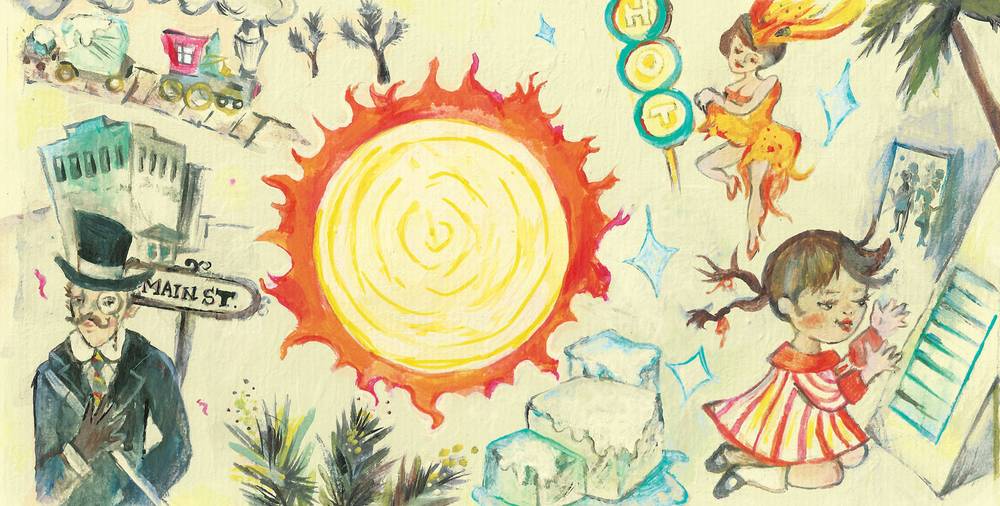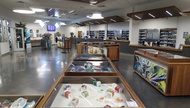In May 2005 Mark Hall-Patton was in a brutally uncomfortable situation. For the Las Vegas Centennial, he and a group of others historically re-enacted the famous 1905 land auction that established the city. This meant wearing a full suit, vest and hat on a 95-degree day. Miserable, yes. But more interesting was that men at the auction a century earlier were dealing with 110-degree heat in wool suits.
No indoor reprieve back then. Air conditioning was decades away. No fridge in which to insert one’s head. Food was cooled off in iceboxes filled by the man who delivered ice from the plant on Main Street, created by the railroad to refrigerate railcars. Other residents used desert coolers—chicken-wire boxes on four legs, covered in burlap with a can on top with tiny holes in the bottom. Water seeping from the can onto the burlap would evaporate, taking down the temperature for the perishables enclosed.
Evaporation was key, Hall-Patton says. Residents not cooling off at their Mount Charleston cabins might take their mattresses outside at night, soak them in water and sleep on them with the evaporation cooling the air. In the daytime the children would follow the ice wagon around. If they were lucky, the iceman would knock off a chunk for them. And that was it. They’d play in the desert, ride horses, hit the swimming holes and just deal with it. There was no easing into a home set 40 degrees cooler. Early houses had overhanging porches. Railroad cottages had concrete walls. By the mid- to late-1930s, swamp coolers cooled homes by maybe 15 degrees, but added humidity.
Summer Survival Guide
“In the very early days they really did not cool off. They just lived with it,” says Dennis McBride, director of the Nevada State Museum in Las Vegas, adding that the heat experience was different back then because of the amount of trees in town and the lack of pavement and concrete, which absorb and radiate heat today.
Salvation came in the 1950s with air conditioning, and kids, who still played outside, took advantage of it. Fremont Street was the town hub back then, and Lynn Zook, historian with classiclasvegas.com, remembers cooling off in the air vents at casino entrances as a child, until chased away by employees. It’s a memory unlike those created now as we lounge inside, noses to computers with televisions blasting and AC cranked.
Hello, summer.





